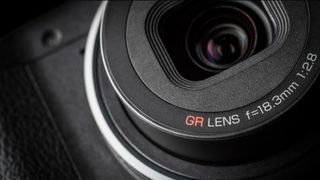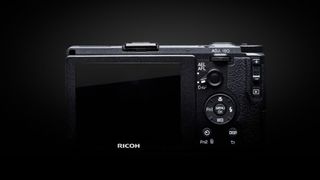The Ricoh GR II puts a DSLR sensor in a pocket-sized body
Ricoh's highly regarded little high-end compact camera gets Wi-Fi, NFC and improved image processing

The Leica Q is the classic fixed focal length compact that camera buffs will dream of, the full-frame Sony RX1 is almost as desirable and the Fuji X100T has become an affordable modern classic – but why is the Ricoh GR so often overlooked?
It's beautifully designed pocket camera with a history that goes right back to the days of film. The current GR was introduced in May 2013, with an APS-C sensor, a fixed focal length f/2.8 lens and a body barely larger than a regular compact camera. It's smaller, more portable and cheaper than any of its rivals, and we liked the GR so much we gave it a 5-star review. This new version builds on its abilities with new features and improved image quality.
What's new?
Superficially, the 16.2-megapixel APS-C sensor in the GR II looks the same as the one in its predecessor, but Ricoh says it's tuned the image processing to offer better auto white balance adjustment and better noise reduction at high ISOs.

And while the lens specs are broadly the same, the new version has two 'high-precision' aspherical elements and one high-refraction low-dispersion element to produce what the company says is the best GR-series lens yet. It has a 9-bladed diaphragm for natural-looking 'bokeh' in out of focus areas and there's an optional conversion lens to widen the 28mm effective focal length to a super-wide 21mm.
The major additions are Wi-Fi and NFC, which were absent from the previous version. These allow remote control via Ricoh's GR Remote smart device app and Image Sync image transfer tool.
Key features
Ricoh has also added six new effects: Clarity, Brilliance, Bright, Portrait, Vibrant and HDR tone – this takes the total to 17. It also offers wireless flash control with compatible external flash units, and full HD movies at 30 frames per second.
The GR II is aimed at serious and discerning enthusiasts, so naturally it offers program AE, aperture-priority, shutter-priority and manual modes, and it can shoot raw files as well as JPEGs.
Get daily insight, inspiration and deals in your inbox
Get the hottest deals available in your inbox plus news, reviews, opinion, analysis and more from the TechRadar team.

Other features include in-camera raw processing, dynamic range compensation for high-contrast scenes and an Interval Composite mode for long exposures which takes a series of exposures at fixed intervals but adds only the brightest parts of each to the overall exposure.
Like the GR, the GR II is a strongly-made little camera with a magnesium alloy body that measures just 117.0 × 62.8 × 34.7mm (4.6 ×2.5 ×1.4 inches) and weighs 251g (8.9oz). It's quite nippy, too, with an autofocus time as short as 0.2 seconds and a 1-second startup time. It can shoot continuously at 4 frames per second and Ricoh has increased the buffer capacity so that it can capture up to 10 raw files in a row. Its small size, unobtrusiveness and speed should make the GR II ideal for rapid-fire street photography.
It's not a major update over the previous version, but the addition of Wi-Fi and NFC keeps the GR II up to date with current technologies.
The Ricoh GR II goes on sale in mid-July at £599.99.
